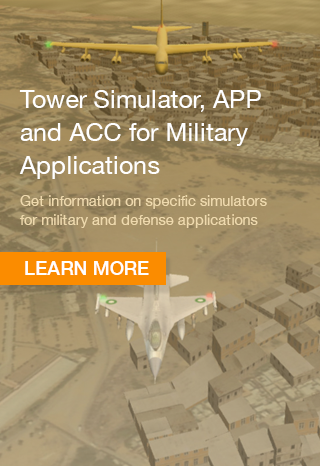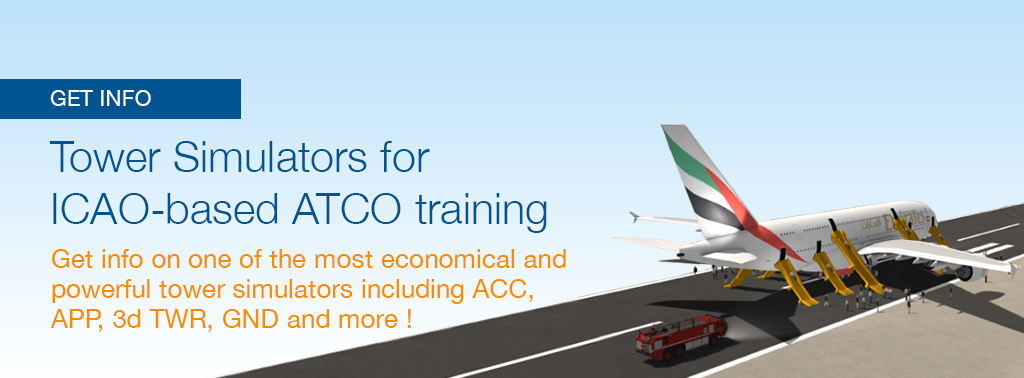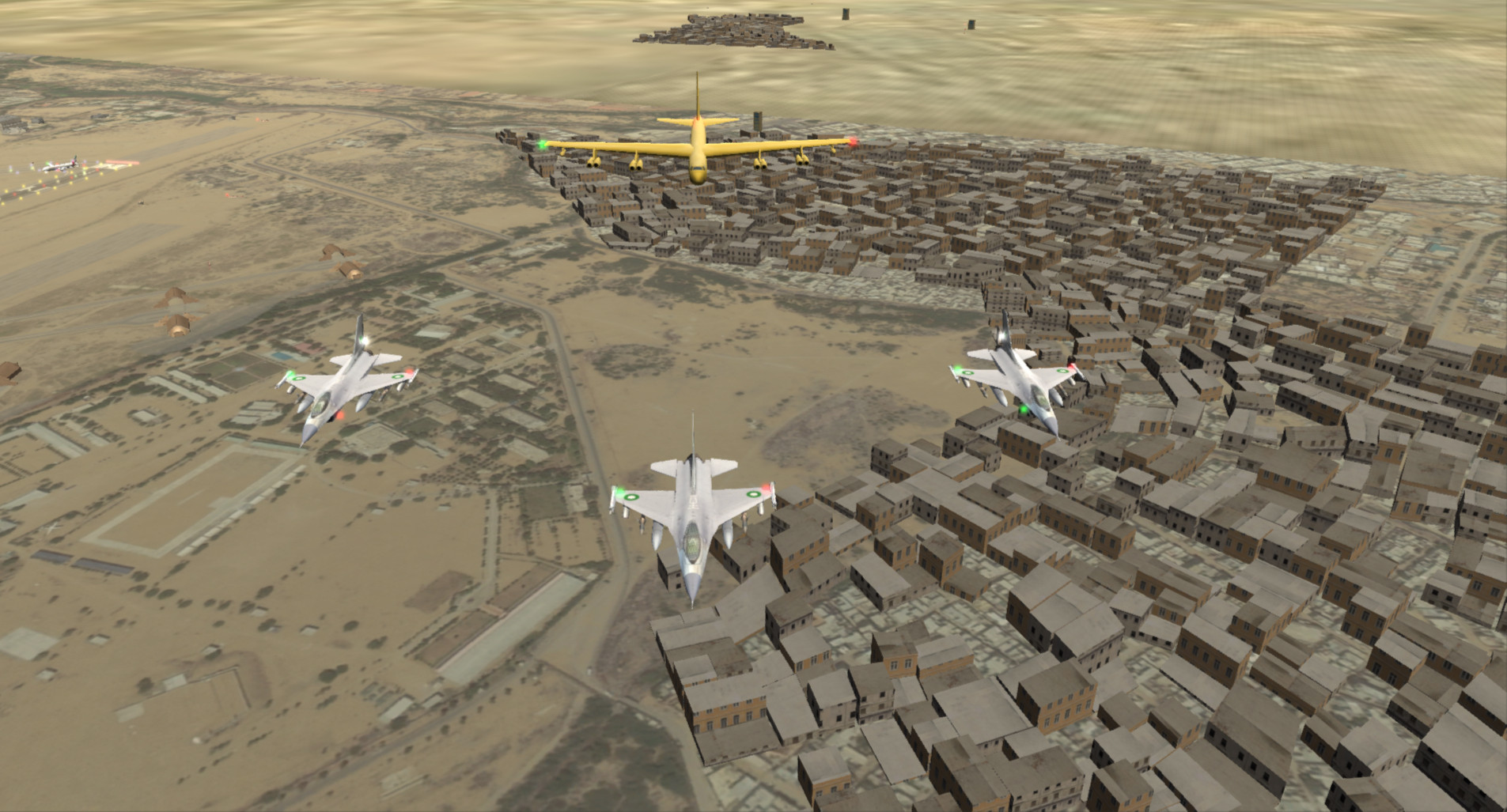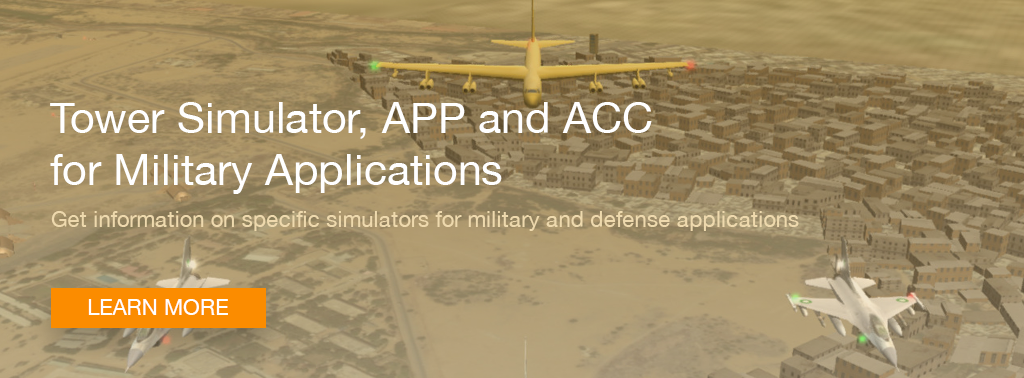It is a common misunderstanding that a standard civil ATC simulator can fully respond to the requirements of military aviation. This article explains the major differences.
Military operations in ATC are structured completely different than civil ATC operations. In short, they have different tasks and work assignments, different procedures, different sensors and different hardware equipment. Examples are permissions, noise restrictions, priorities, minimal height, air refueling etc.
A civil simulator will not be able to map these features, It is also unable to reproduce the broad scope of military manoeuvres. Military users need to be able to cover all these features. In addition, a military simulator needs to include all civil features as military surveillance and navigation systems are fed with the data of civil aviation.
Setting the Stage: Real ATC Systems with Simulated and Life Data Inputs
Yet another word on our quality expectations concerning ATC simulators: When we talk about simulators, our perception is that they should build on a fully operational ATC-system, fed with simulated inputs.
A pure "toy"- simulator will be too limited to represent the variety of scenarios that can happen, including those of a depreciated system (e.g., a depreciated radar source). Also they cannot feed live data (e.g., live civil PSR and SSR data, meteo data or RadNet).
A real ATC system includes a real VCS and standard data communication (e.g., the following ASTERIX protocol). Pilots will be represented by Pseudo-pilots which navigate the simulated aircraft.
The Air traffic safety electronics personnel (ATSEP) can only be trained, if the technical infrastructure is present. An ATCO or military surveillance officer needs to be able to handle depreciated system scenarios of "off-set" radars.
Our feature-scope might go beyond mainstream simulator performance.
Military Scenarios
A military simulator needs to include the relevant military scenarios. Examples are:
- formation flights,
- attack and combat situations,
- emergency situations and accidents,
- runway bombing,
- air fueling,
- parachute escape
- assaults,
- etc
To produce such scenarios, the simulator needs to include various threat objects like missiles with configurable performance characteristics and inertial navigation, simulated in 3D (Tower) and 2D (en route and approach), drifted by wind, etc.
Military aircraft and helicopters are part of the simulated objects
Air Force related features
Air Force related features include:
- inputs from sensors specific to military applications
- aircraft and their equipment including selected armament
- reduced vertical separation minima (RVSM-exceptions),
- ground equipment
- military operations
- military procedures
- military tasks
Electronic Counter Measures
Important in military activities are
- Electronic Counter Measures ECM - are strategies to disturb the opponent through noise and digital radio frequency memory
- Electronic Counter Counter Measures ECCM - the defense strategies and procedures against DRFM and jamming attacks
Civil Military Cooperation
The airspace is shared by civil and military aircraft. In consequence civil military cooperation is mandatory, but not symmetric.
The military operators need full information on the civil traffic (flight plans etc).
The civil ATCOs receive information restricted to necessary data for a safe operation of the air traffic.
But inputs like Mission Planning data is not shared.
Coordination is needed for many features like
- conditional routes,
- customs and border protection (CBP),
- flexible use of airspace (FUA),
- intelligence surveillance reconnaissance (ISR) for civil military cooperation,
- performance-based navigation (PBN),
- segregated airspace,
- system-wide-information-sharing (SWIM),
 Military Interception
Military Interception
Interception is an important source of information in military surveillance.Two important interception procedures are Ground Conducted Interception and Predictive Dynamic Interception:
- Ground Conducted Interception (GCI) allowing to monitor targets as own, foreign and state.
- Predictive Dynamic Interception (PDI), facilitating the evaluation of the current tactical situation with respect to enemy aircraft and the air defense resources available at the particular air base.
Please contact us for further information, which we can share in compliance with the Regulations of the EU, as it is in parts classified.
Mission Planning as part of the ATC simulator
A typical military ATC system includes expert systems for mission planning support, helping to analyze various options of operation. In order to replicate this feature in the simulated world, the ATC simulator also needs such an expert system. It needs to include features like:
- an airspace database with objects as per need of the Air Force;
- a database of own and enemy facilities and resources depicted in maps and designated with requested markings; in the air, on the ground or in the sea;
- a database of own and enemy aircraft and weaponry with their capabilities for the purpose of simulations
- a database of standard and special flight operations (manoeuvres)
- a mission scenario editor.
Specific interfaces for Military Purposes
In order to run training operations across teams, the simulated ATC-system should have interfaces for API for military Command-Control-Communication systems and mission planning systems.
We personally think that an interface to simulators of distributed control systems and firefighting systems should exist. Scenarios like burning aircraft or kerosene tanks are part of typical military emergency scenarios, which should be part of the training plan (Read more). The control architecture of a DCS is different from its civil pendant. Firefighting procedures are similar in civil and military scenarios.
The author thanks ATC Expert Dana Brhelova for her valuable comments, inputs and revisions.
Our mission are safe and peaceful skies!
Our role should be to make this world safer. SkyRadar does not provide insights in to weaponizable radar or ATC technology. You will not find beam-steering or other attack techniques.
But we are convinced that it is every sovereign democracy's right to protect and defend its territory against aggression and malicious attacks. This is part of the protection of liberty, life and freedom. This is why we consider such military ATC training as an important service.
Our support and deliveries will be made in coordination with the responsible European authorities.
Talk to our experts for more insight.

.


.png?width=1920&name=area-control%20(1).png)



